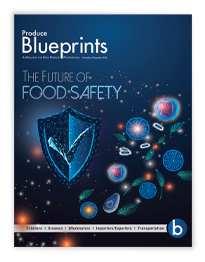According to figures released by the Philadelphia Regional Port Authority, fruit handled at the port for the first six months of the year totaled nearly 100,000 metric tons (dominated by grapes from Chile and bananas from Costa Rica), remaining steady compared to 2013. If Ship Philly First has its way, this number may rise exponentially in the next few years, benefiting grower-shippers in Mexico as well as wholesalers, retailers, and consumers in the Philadelphia area and extending throughout the state and Eastern Seaboard.
A Brief History:
Dock Creek to Dock Street to Essington Avenue
Philadelphia’s original wholesale market sprouted after city officials decided to fill in the dangerously polluted Dock Creek, a tributary of the Delaware River. The repurposed creek bed (renamed Dock Street) vastly improved the lives and health of city-dwelling Philadelphians by replacing the contaminated inlet with a fresh produce market.It was a massive project for the day. But as horse power gave way to gas-powered trucks and population climbed by double-digits each year, the Dock Street market outgrew itself and the ability to feed the community and beyond.
Next came the Food Distribution Center in 1959 on Galloway Street, which embraced available technology of the day and carried the ball for over fifty years. Then, Philly did it again—transforming a former dump and eyesore on Essington Street into the sprawling, state-of-the-art Philly wholesale market of today.
Retailers – A Mixed Bag
Despite its state-of-the-art facility, doing business with the area’s variety of retailers—both old and new—remains disappointing for many merchants. Recently, when new chains moved into the region, the PWPM was not tapped as a primary source for fresh produce. Instead, Curtis explains, the larger regional or national chains came in with their own central warehousing—one of the effects of consolidation.
DiFeliciantonio says it was never practical to think the PWPM would replace chain distribution centers, but the market can tangibly support the big players. “There will always be late trucks, or a problem in a growing area that creates a shortage. That’s when we help fill the gaps.”
Breaking into the major chains takes time to build relationships and trust. “Bigger customers are getting more comfortable that the volume is here,” he says. “They already know we have the variety—we have everything from A to Z.”
Even without all-in patronage from the big-box stores, optimism runs high. “Where we’re seeing the pull,” Curtis affirms, “is from independent retailers.” The independents recognize how the PWPM can help them be nimble, responsive retailers. He applauds ‘discerning’ buyers who realize the value of their purchases and appreciate the opportunity to buy the freshest fruit and vegetables by seeing the quality firsthand, then negotiating a suitable price.



